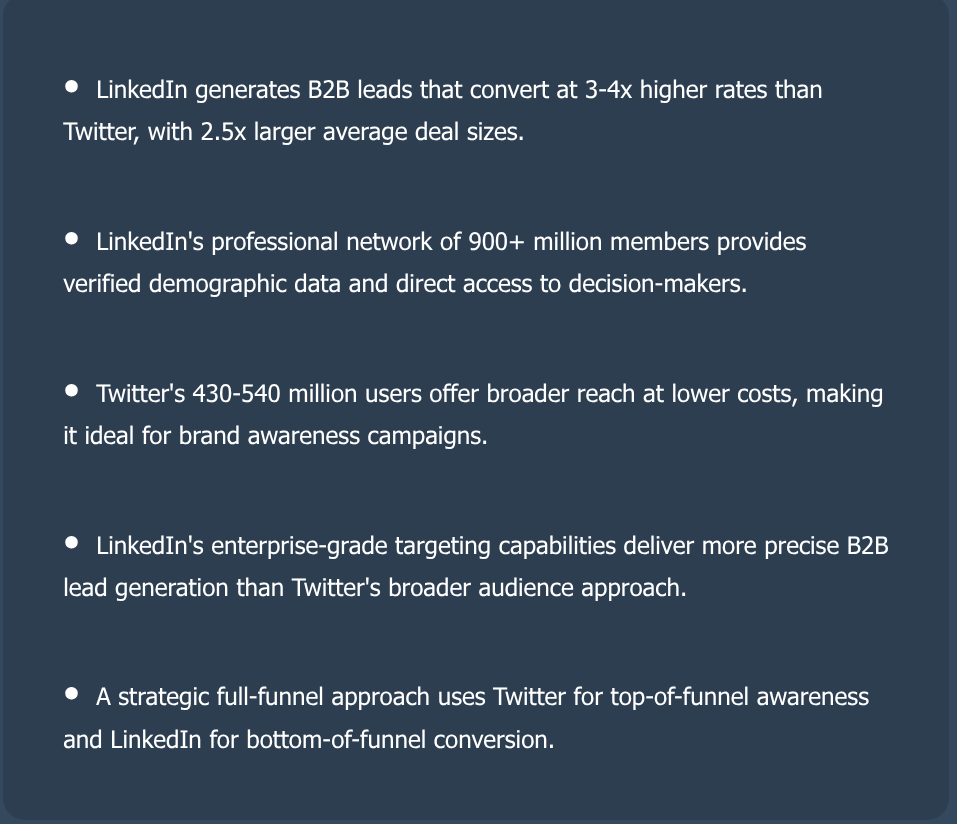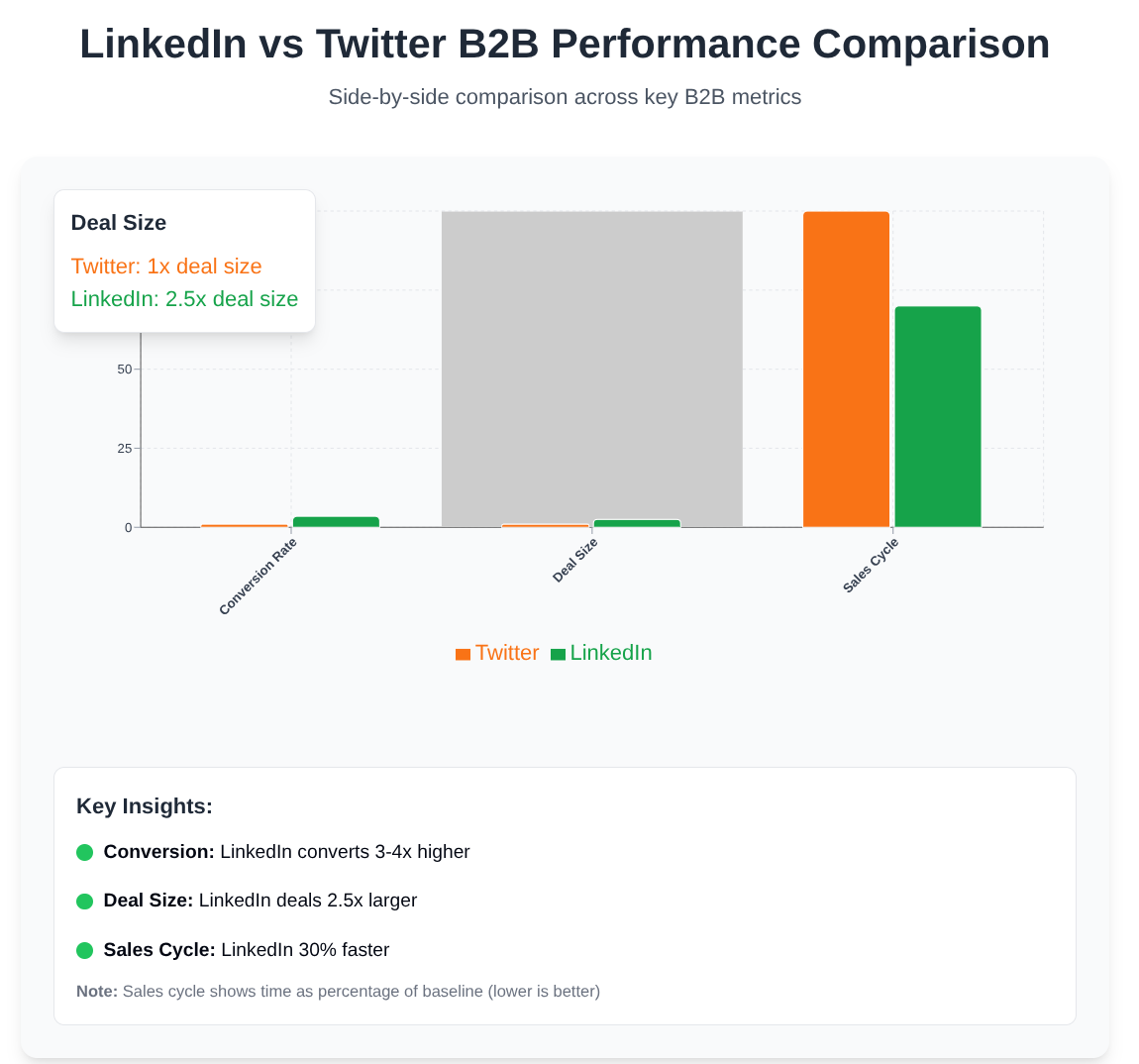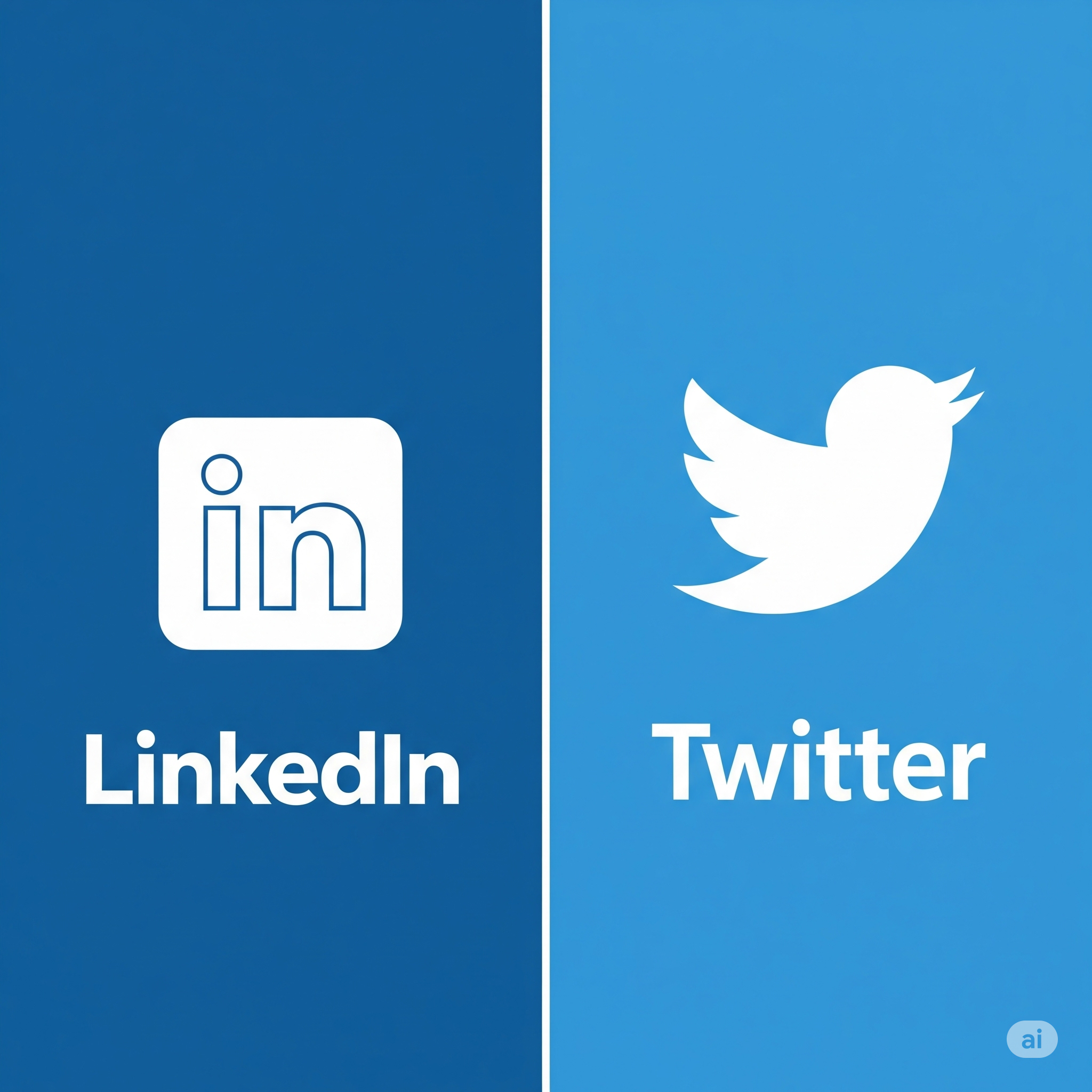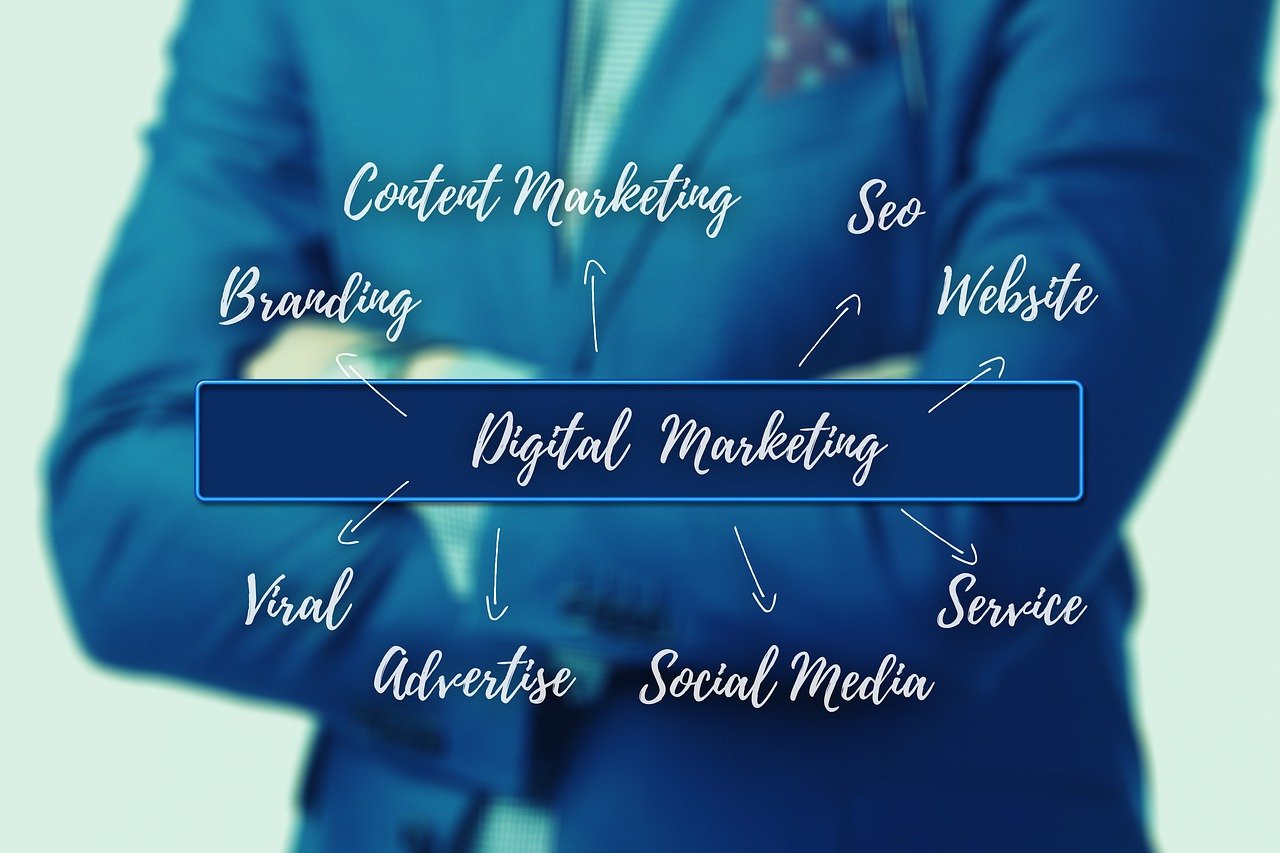Wondering which platform delivers better B2B leads? LinkedIn converts 3-4x higher than Twitter with 2.5x larger deals, thanks to its 900M+ professional users and superior targeting. But Twitter’s 540M users offer broader reach at lower costs—ideal for awareness before LinkedIn closes deals.
Check out additional articles about social media marketing here: https://amzoraltd.com/benefits-of-organic-social-vs-paid-social-media/
Key Takeaways

Why LinkedIn Outperforms Twitter for B2B Lead Conversion
When it comes to generating high-quality B2B leads that actually convert to sales, LinkedIn consistently outperforms Twitter across key metrics that matter to your bottom line. Content Marketing Agent, a leader in B2B marketing solutions, has observed that LinkedIn leads convert at 3-4 times higher rates than those from Twitter, representing a significant advantage for businesses focused on ROI-driven marketing.
The numbers tell a compelling story: LinkedIn leads not only convert better but also produce 2.5x larger average deal sizes compared to Twitter leads. Perhaps even more impressive is that these LinkedIn-generated leads typically move through your sales pipeline 30% faster, dramatically reducing the time and resources needed to close deals.
Key Platform Differences That Drive Lead Generation Results
Audience Intent: Professional vs. Conversational Mindset
The fundamental difference between these platforms begins with user psychology. LinkedIn’s 900+ million members primarily engage with the platform in a professional context. They’re actively looking for business insights, career advancement, and solutions to work-related challenges. This professional mindset creates an environment where B2B messages are expected and welcomed rather than seen as interruptions.
In contrast, Twitter’s user base approaches the platform with a conversational, real-time focus. People use Twitter to catch up on trending topics, engage in public discourse, and consume a broad mix of content. While Twitter can certainly reach business professionals, they’re typically not in a business decision-making mindset while scrolling their Twitter feed.
Platform Architecture: Business-First vs. Engagement-First
LinkedIn’s architecture is built from the ground up to facilitate professional connections and business relationships. Every aspect of the platform—from user profiles to content algorithms—prioritizes professional relevance and business value. The entire ecosystem supports a natural progression from awareness to consideration to decision.
Twitter, however, is designed to maximize engagement and conversation. Its algorithm rewards content that generates immediate interaction rather than thoughtful business consideration. This engagement-first design makes Twitter excellent for brand visibility but creates additional hurdles for converting that visibility into qualified B2B leads.
Content Expectations: In-Depth vs. Real-Time Brevity
Content consumption patterns differ dramatically between the platforms. LinkedIn users expect and engage with more substantial, in-depth professional content. Detailed case studies, comprehensive industry analyses, and thoughtful leadership pieces perform exceptionally well. This allows marketers to fully communicate value propositions and build credibility with potential leads.
Twitter content requires brevity and visual appeal to stand out in the fast-moving timeline. Messages must be concise, timely, and eye-catching to capture attention in an environment where users are rapidly scrolling through diverse content types. This necessitates a completely different content strategy than what works on LinkedIn.
LinkedIn: The Professional Network Built for
B2B Conversion
Professional-First Environment & User Psychology
LinkedIn’s core strength is its professional-first environment where users come specifically to advance their careers, expand their business networks, and find solutions to professional challenges. When browsing LinkedIn, users are mentally prepared to engage with business content and evaluate potential solutions, creating a naturally receptive audience for B2B marketing messages.
This professional context means users on LinkedIn are more likely to dedicate time to considering business propositions, downloading whitepapers, or filling out lead forms than they would be on other platforms. The intent-driven nature of LinkedIn browsing creates a powerful foundation for lead generation that simply doesn’t exist on Twitter.
Verified Demographic Data & Decision-Maker Access
The quality of LinkedIn’s user data is unmatched in the social media landscape. With verified professional profiles containing accurate information about job titles, company sizes, industries, and seniorities, LinkedIn offers B2B marketers unprecedented access to decision-makers and buying committees.
Unlike Twitter, where professional information is limited and often unverified, LinkedIn’s data structure allows you to directly target C-suite executives, directors, and managers with budget authority. This targeting precision is invaluable for B2B campaigns where reaching the right decision-maker is often the difference between success and failure.
Enterprise-Grade Targeting Capabilities
LinkedIn’s targeting capabilities are specifically engineered for B2B marketing precision. The platform allows marketers to build highly specific audience segments based on:
- Company attributes (size, industry, name, growth rate)
- Job characteristics (title, function, seniority)
- Skills and qualifications
- Groups and interests
- Education background
This level of targeting granularity simply isn’t available natively on Twitter, which offers broader demographic and interest-based targeting but lacks the professional depth that LinkedIn provides. While third-party tools can enhance Twitter targeting, they add complexity and cost to campaigns.
Lead Gen Ad Formats Optimized for Conversion
LinkedIn’s ad formats are specifically designed to capture high-quality B2B leads with minimal friction. The platform’s Lead Gen Forms are particularly powerful, pre-filling user information from their LinkedIn profiles with a single click. This streamlined process delivers conversion rates up to 5x higher than standard landing page forms, dramatically improving lead capture efficiency.
Other LinkedIn formats like Conversation Ads enable interactive, choose-your-own-path messaging experiences that qualify leads while engaging them in a personalized way. Document Ads allow users to preview professional content before submitting contact information, creating a value exchange that respects the user’s professional time while delivering qualified leads.
Twitter’s Strengths in
the B2B Marketing Mix
Real-Time Engagement & Brand Visibility
While Twitter may not match LinkedIn’s lead conversion capabilities, it excels in creating real-time brand visibility and engagement. The platform’s conversational nature makes it ideal for participating in industry discussions, sharing timely updates, and building brand awareness through ongoing interactions.
Twitter’s public, open format allows brands to join conversations happening around industry events, breaking news, and trending topics. This opportunity for timely engagement helps establish brand presence and thought leadership in a way that complements LinkedIn’s more structured approach to professional networking.
Budget-Friendly Audience Reach
One of Twitter’s most compelling advantages is its cost-effectiveness for reaching large audiences. Twitter generally offers lower advertising costs compared to LinkedIn, whose premium audience commands premium prices. LinkedIn’s ad costs have increased up to 30% recently due to growing demand, making Twitter an attractive alternative for budget-conscious marketing teams.
This cost advantage allows businesses to amplify their message to a broader audience without the significant investment required on LinkedIn. For companies looking to maximize brand exposure and create initial awareness before driving conversion, Twitter provides an economical entry point into social media marketing.
Community Building & Thought Leadership
Twitter excels at fostering active communities around brands, industries, and specialized topics. The platform’s interactive features—retweets, quote tweets, threads, and hashtags—create natural vehicles for community engagement that can amplify your brand’s reach beyond your direct followers.
Thought leadership development also thrives on Twitter, where subject matter experts can share quick insights, join trending conversations, and establish credibility through consistent, valuable contributions. This community-building strength makes Twitter particularly valuable for the awareness and interest stages of the B2B buyer journey.
Cost-Benefit Analysis:
The True ROI Picture
Initial Costs vs. Total Acquisition Cost
When evaluating LinkedIn versus Twitter for B2B lead generation, looking beyond the initial cost per lead (CPL) reveals a more nuanced picture. While Twitter typically offers a lower CPL, the total cost of acquiring a customer includes the entire journey from initial touch to closed deal.
LinkedIn leads may cost more to acquire initially, but their higher quality translates to fewer resources spent on qualification, nurturing, and conversion. When considering the total customer acquisition cost (CAC), LinkedIn often delivers superior ROI for B2B companies, especially those selling high-ticket products or services.
Lead Quality & Conversion Metrics
The quality difference between LinkedIn and Twitter leads becomes apparent when examining conversion metrics throughout the sales funnel:

- LinkedIn leads convert at 3-4x higher rates than Twitter for B2B outreach
- LinkedIn leads have 2.5x larger average deal sizes compared to Twitter leads
- LinkedIn leads have 30% shorter sales cycles than Twitter leads
These dramatic differences in conversion rates, deal sizes, and sales velocity make LinkedIn the clear winner for bottom-of-funnel lead generation despite its higher initial costs. For B2B companies focused on revenue impact rather than lead volume alone, these quality metrics are impossible to ignore.
Case Studies: Measurable Performance Data
Real-world performance data consistently demonstrates LinkedIn’s advantage for direct B2B lead generation. Companies across industries report stronger results from LinkedIn campaigns when measuring qualified opportunities and closed revenue.
For example, enterprise software companies typically see higher-quality leads from LinkedIn, with prospects more likely to book demos and engage in serious sales conversations. Meanwhile, Twitter campaigns for the same companies generate more top-of-funnel awareness but require significantly more nurturing to reach the same conversion points.
Strategic Integration: The Full-Funnel Approach
1. Twitter for Top-of-Funnel Awareness
Twitter’s broad reach, lower costs, and conversational nature make it ideal for creating initial brand awareness. At this stage, focus on:

- Sharing thought leadership content that establishes industry expertise
- Participating in relevant hashtags and trending conversations
- Building a following and community around your brand
- Creating shareable, visual content that introduces your solutions
2. Cross-Platform Nurturing Strategies
As prospects move from awareness to consideration, implement cross-platform nurturing strategies:

- Retarget Twitter engagers with LinkedIn ads for deeper content
- Use consistent messaging themes across both platforms while adapting format
- Drive Twitter followers to LinkedIn events or company pages
- Coordinate content calendars to reinforce key messages across platforms
3. LinkedIn for Bottom-of-Funnel Conversion
As prospects approach decision stages, shift focus to LinkedIn’s conversion-optimized environment:

- Deploy Lead Gen Forms to capture qualified leads with minimal friction
- Use Conversation Ads to engage high-intent prospects directly
- Target specific decision-makers within accounts showing interest
- Share detailed case studies and ROI-focused content
The Strategic Verdict: Match Platforms to Business Objectives
The LinkedIn versus Twitter question isn’t about declaring an absolute winner but about strategic alignment with your specific business objectives and target audience. Each platform serves distinct purposes in an integrated B2B marketing strategy.
LinkedIn clearly dominates for direct lead generation, especially for companies targeting senior decision-makers with high-value solutions. Its professional environment, precision targeting, and conversion-optimized formats make it unmatched for bottom-of-funnel activities.
Twitter delivers superior value for brand awareness, community building, and top-of-funnel engagement. Its lower costs, broader reach, and real-time nature make it an excellent complement to LinkedIn’s more focused approach.
Ultimately, the most effective B2B marketing strategies incorporate both platforms in a coordinated approach that guides prospects from initial awareness through to conversion, maximizing the unique strengths of each channel along the way.
Content Marketing Agent helps businesses develop integrated social media strategies that leverage the strengths of each platform to drive measurable B2B lead generation results.


